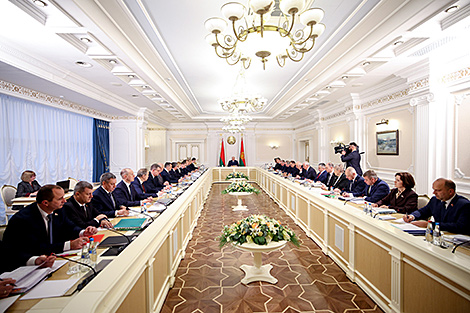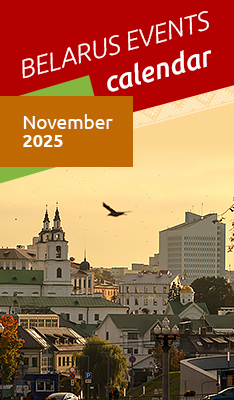Business news
Golovchenko names top two economic goals for five-year period

An archive photo
MINSK, 16 October (BelTA) – Chairman of the National Bank of Belarus Roman Golovchenko set boosting investment and innovation in both the public and private sectors as key economic priorities for 2026-2030 as he spoke to the media following a meeting with Belarusian President Aleksandr Lukashenko to discuss draft forecast documents for 2026, BelTA has learned.
The draft of the country's 2026-2030 social and economic development program is currently being finalized by a special working group. The group was created on the head of state's instructions and is led by Roman Golovchenko. The group are focused on solving two major issues. “We are facing a dilemma that must be resolved in the upcoming five-year period,” the head of the National Bank said.
“First, we need to increase the science-intensity of our products. Put simply, everyone must invest more in innovation, from the state down to small firms,” he emphasized. Currently, innovation is sometimes understood only as state budget funding for relevant government programs. But everyone must be “investment-active”, Roman Golovchenko is convinced. “If we do not want to perpetually be a ‘catching-up economy’, we must seriously enhance the innovativeness of our own products, and to do that, we need to increase spending on research and development, including at commercial enterprises,” he explained.

Second, it is necessary to significantly increase the volume of investment in the production sector and commercial projects to generate growth in added value. “This is one of the key and fundamental points for the growth and development of our country, both in the next five-year plan and in all subsequent ones. It is one of the main economic priorities in the near future,” the National Bank head stressed.
According to the forecast for Belarus' social and economic development in 2026, announced earlier by the Economy Ministry, investment growth was planned at 3.1%. Priority investment areas are planned to include housing construction, including rental housing, and the development of social and transport infrastructure.

It is expected that two-thirds of the total planned investment volume will be allocated to the implementation of commercial projects and the technical modernization of enterprises.
A pool of over 600 investment projects has been formed, which includes the implementation of more than 10 major investment projects, about 100 Regional Initiative projects, the completion of projects started in previous years under the One District - One Project concept, as well as integration and import-substitution projects (about 120 projects).







 print version
print version make home page
make home page add to bookmarks
add to bookmarks

